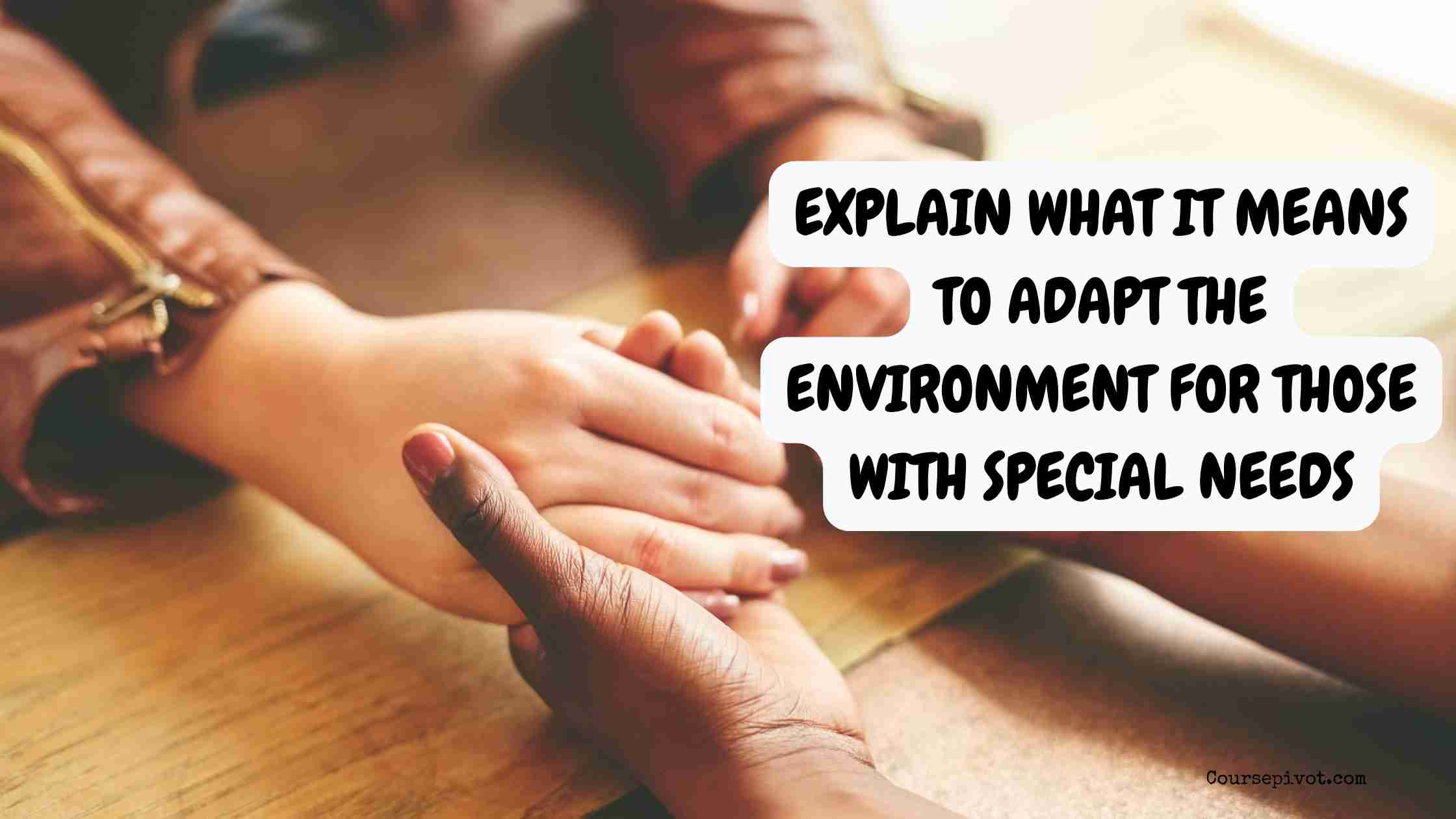
What It Means to Adapt the Environment for Those with Special Needs
Adapting the environment for those with special needs isn’t just a thoughtful gesture—it’s a fundamental part of building an inclusive, fair, and functional society.
But what does it really mean to adapt the environment?
Table of Contents
Let’s break it down into real-life examples, practical solutions, and a bit of personal reflection—because if you’ve ever worked with, lived with, or simply supported someone with special needs, you know how powerful small changes can be.
What Does “Adapting the Environment” Actually Mean?
To adapt the environment for those with special needs means to modify physical spaces, tools, communication methods, and social settings to ensure that individuals with disabilities or challenges can function, participate, and thrive just like everyone else.
It’s not about giving special treatment. It’s about removing unfair barriers.
It means asking: “What needs to change around this person—not what’s wrong with them?”
- Read our blog 10 Reasons why Electric Cars are Bad for the Environment
Why Do We Need to Adapt the Environment?
Because not everyone moves, sees, hears, communicates, learns, or processes information in the same way.
Without adaptation:
- A child with autism may be overwhelmed in a noisy classroom.
- A person in a wheelchair might struggle to enter a building without a ramp.
- A visually impaired student might miss key content without audio materials.
But with adaptation:
- That same child can thrive with a calm corner and sensory tools.
- That building becomes accessible with a ramp and elevator.
- That student excels with screen readers and braille books.
So, adapting the environment gives people equal access to success.
Types of Environmental Adaptations for Special Needs
Here are some key areas where adaptations are commonly made:
1. Physical Environment
- Installing ramps, elevators, and widened doorways for wheelchair users
- Providing adjustable desks or seating for posture and comfort
- Ensuring non-slip flooring and clear walkways to reduce fall risks
- Using visual cues like color-coded signs for those with cognitive challenges
2. Sensory Environment
- Minimizing loud sounds or harsh lighting for individuals with sensory sensitivities (common in autism or PTSD)
- Providing noise-canceling headphones or quiet zones
- Using natural light and calming colors in classroom or therapy settings
3. Learning Environment
- Offering audio versions of texts for the visually impaired
- Allowing extra time on tests or simplified instructions
- Incorporating assistive technology like speech-to-text apps or reading software
4. Communication Environment
- Using sign language interpreters or captioning for the hearing impaired
- Introducing visual schedules or picture boards for non-verbal individuals
- Offering simplified or alternative formats for instructions and materials
5. Social and Emotional Environment
- Training staff to use inclusive language and positive behavior supports
- Creating peer buddy systems or safe spaces for emotional regulation
- Encouraging empathy, patience, and flexibility in all interactions
Real-Life Examples of Adapted Environments
- In classrooms, I’ve seen teachers use wiggle seats and fidget tools to help students with ADHD stay focused.
- At public events, quiet rooms are provided for those with anxiety or sensory processing disorders.
- In workplaces, modified job duties or remote work setups enable people with physical or mental health challenges to contribute fully.
Adapting doesn’t mean lowering standards. It means changing the path so more people can reach the same destination.
What Are the Benefits of Adapting the Environment?
Let’s be clear—everyone benefits:
- For individuals with special needs: Increased independence, dignity, and participation.
- For families and caregivers: Less stress, more opportunities, greater confidence.
- For communities and schools: Stronger inclusion, diversity, and innovation.
Adapting environments helps people belong, not just be present.
Challenges to Watch For
- Lack of awareness: Many people don’t understand how much the environment impacts ability.
- Budget limitations: Some adaptations cost money, though many are simple and low-cost.
- Resistance to change: Systems often struggle to move from “one-size-fits-all” thinking.
But the truth is, inclusive design helps everyone, not just those with special needs. Think about automatic doors, ramps, or subtitles—we’ve all benefited from those.
What It Truly Means to Adapt the Environment for Those with Special Needs
Adapting the environment means recognizing that “equal” isn’t always “fair.”
Fairness means adjusting the world to fit different people—not forcing different people to fit into one rigid world.
Whether it’s a classroom, workplace, hospital, or public park, making thoughtful changes can transform lives.
We’re not talking about huge renovations. We’re talking about small, intentional decisions that say: “You matter here.”
So if you ever ask, “What does it mean to adapt the environment for those with special needs?”, remember this:
It means seeing ability in every person, and doing your part to open the door wide enough for them to walk through.
Cite this article
You can copy and paste your preferred citation format below.
Martin, L. & Arquette, E.. (2025, May 26). What It Means to Adapt the Environment for Those with Special Needs. Coursepivot.com. https://coursepivot.com/blog/explain-what-it-means-to-adapt-the-environment-for-those-with-special-needs/



